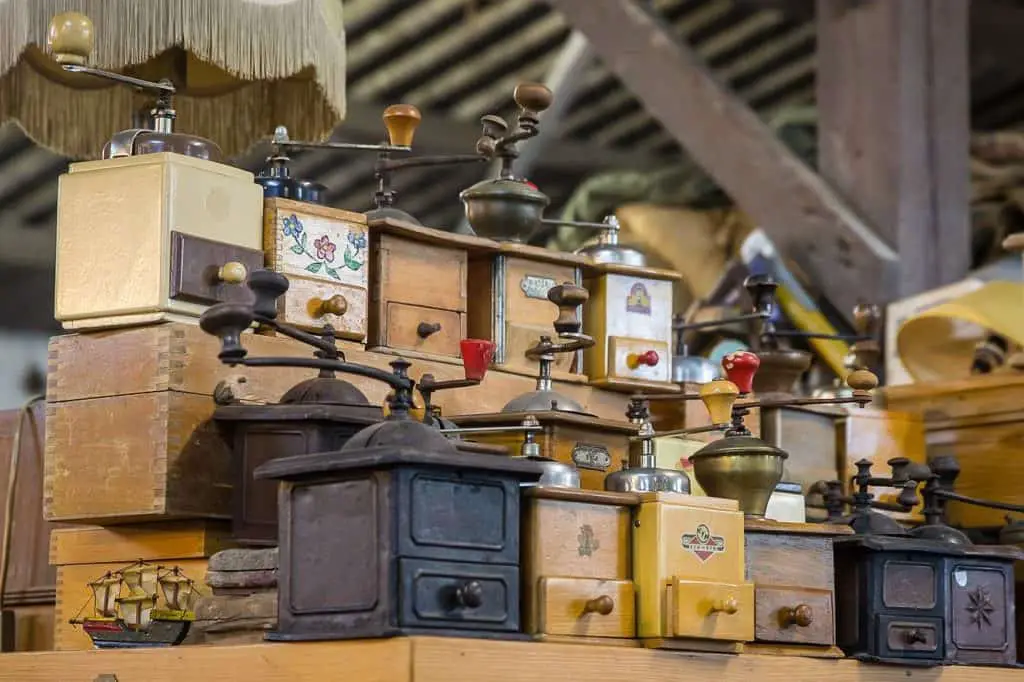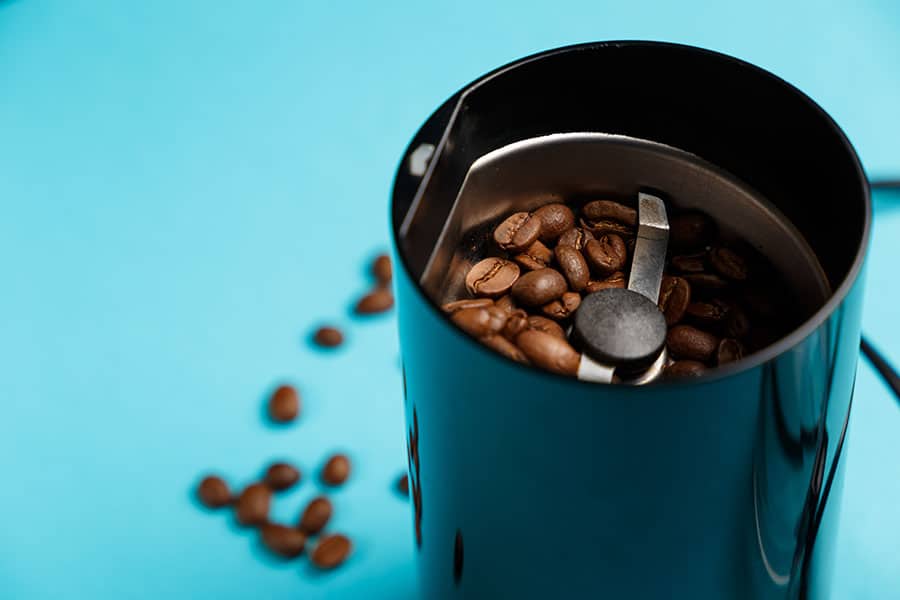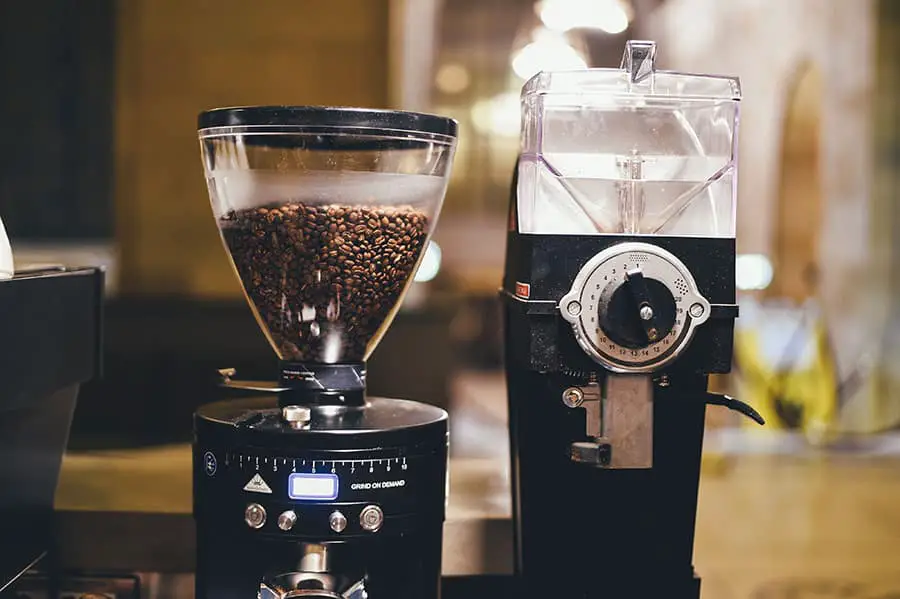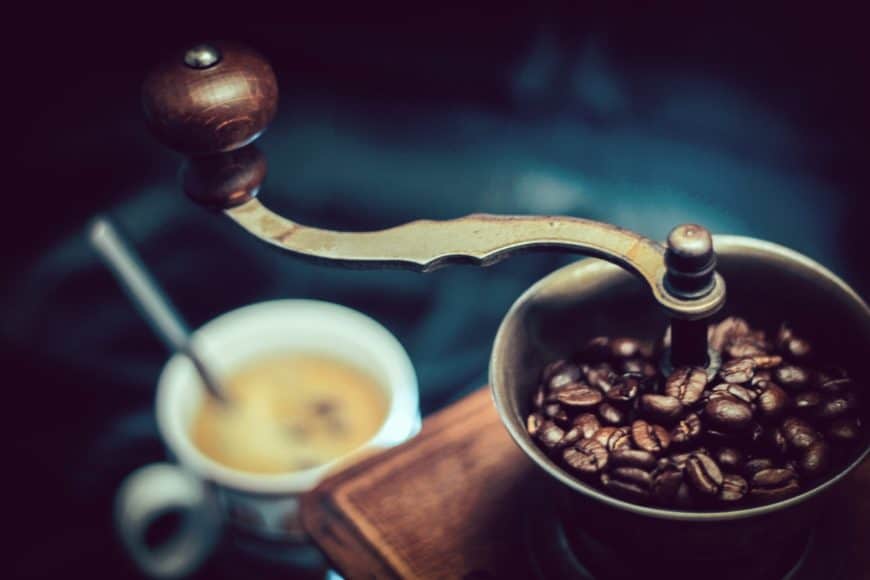
The magic of a perfect coffee cup starts with freshly ground beans, and the grinder you choose can transform your brew from meh to magnificent. Blade and burr grinders sit at the heart of this decision, each offering a distinct approach to turning whole beans into grounds ready for your French press, espresso machine, or drip maker.
One’s a budget-friendly speed demon; the other’s a precision powerhouse favored by coffee nerds. If you’re wondering which fits your morning routine—whether you’re a casual sipper racing the clock or a pour-over purist chasing flavor—this guide dives deep into their differences.
From price and speed to consistency and maintenance, we’ll unpack everything you need to pick the grinder that’ll elevate your coffee game. Let’s grind into it and find your brew’s best friend.
Blade Grinders: Fast, Affordable, but Flawed

Picture a blade grinder as a tiny blender for your coffee beans. A propeller-like blade spins at high speed, chopping beans into smaller bits. You can grab a decent one, like the Hamilton Beach Fresh Grind, for as little as $15–$50, making it a go-to for budget brewers. Speed is their superpower—coarse grounds for a French press take about 5–10 seconds, while medium grinds for drip coffee might need 20. Just press a button, and you’re done.
But here’s the catch: blade grinders don’t really “grind.” They slice and smash beans unevenly, leaving a mix of fine powder (called “fines”) and chunky pieces (known as “boulders”). This inconsistency messes with brewing, as smaller particles over-extract, turning bitter, while larger ones under-extract, tasting sour. Pulsing the grinder—short bursts with a shake in between—helps, but it’s still a gamble. Plus, holding the button too long generates heat, which can scorch beans and dull their flavor. For casual sippers who brew forgiving methods like French press or cold brew, a blade grinder gets the job done. If you’re picky about taste, though, it might leave you wanting more.
Burr Grinders: The Gold Standard for Flavor

Burr grinders are the rock stars of the coffee world, favored by baristas and home brewers who chase perfection. Instead of chopping, they crush beans between two abrasive surfaces—burrs—creating uniform particles. Models like the Baratza Encore ($150) or Virtuoso+ ($250) range from $100 to $500, with high-end picks like the Eureka Mignon hitting $600 for espresso nerds. Grinding takes longer—15–40 seconds depending on the model and setting—but the results are worth it.
Uniformity is where burr grinders shine. Beans pass through the burrs once, ensuring consistent sizes that brew evenly, whether you’re crafting a coarse cold brew or a powdery espresso shot. Adjustable settings let you dial in the exact grind size, from chunky to fine, making them versatile for any method. They generate less heat than blade grinders, especially low-RPM models, preserving the beans’ natural oils and aromas. The trade-off? They’re pricier and require regular cleaning to avoid clogs, especially with oily beans. For anyone serious about pour-overs, drip, or espresso, a burr grinder is a game-changer.
Comparing the Two: Price, Speed, and Beyond
Choosing between blade and burr grinders boils down to your priorities. Blade grinders are wallet-friendly and lightning-fast, perfect for those who value convenience over precision. Burr grinders cost more and take a bit longer but deliver unmatched flavor through consistency. Noise is another factor—blade grinders are quieter due to simpler motors, while burr grinders, especially flat burr models, can rival a blender’s hum. Maintenance leans in favor of blades, which need only a quick wipe, whereas burr grinders demand brushing or even disassembly to clear grounds. Durability tips toward burrs, with steel or ceramic burrs lasting 5–10 years compared to blade grinders’ 1–3 years.
Here’s a quick breakdown:
| Feature | Blade Grinder | Burr Grinder |
|---|---|---|
| Price | $15–$50 | $100–$500+ |
| Grind Time | 5–20 seconds | 15–40 seconds |
| Consistency | Uneven, fines & boulders | Uniform, adjustable |
| Noise | Quiet to moderate | Moderate to loud |
| Maintenance | Minimal, easy wipe | Regular cleaning needed |
| Durability | 1–3 years | 5–10 years |
| Best For | French press, cold brew | Espresso, pour-over, drip |
Burr Grinder Deep Dive: Flat vs. Conical, Steel vs. Ceramic
If you’re leaning toward a burr grinder, you’ll face a couple of choices. Flat burrs, like those in the Eureka Mignon, use parallel discs to crush beans, offering precision ideal for espresso but sometimes trapping grounds, which requires extra cleaning. Conical burrs, found in the Baratza Encore, use nested cone-shaped rings, making adjustments easier and producing slightly less waste. Both deliver excellent coffee—the difference is subtle unless you’re brewing for a café.
Then there’s the burr material. Steel burrs, common in most models, are sharp and precise, great for pour-overs or drip. Ceramic burrs, like those in some Hario grinders, stay sharp longer and resist heat better, a plus for espresso fans. In practice, most home brewers won’t notice a flavor gap between the two. Pick based on your budget and brewing style, not hype.
Matching Grinders to Brew Methods
Your grinder choice shapes your brew, as each method thrives on a specific grind size. Blade grinders handle coarse grinds decently for French press or cold brew but struggle with finer settings, producing clumpy grounds unfit for espresso or pour-overs. Burr grinders excel across the board, letting you tweak settings for any setup.
| Brew Method | Grind Size | Blade Grinder Fit? | Burr Grinder Fit? |
|---|---|---|---|
| French Press | Coarse | Good | Excellent |
| Drip Coffee | Medium | Fair | Excellent |
| Pour-Over | Medium-Fine | Poor | Excellent |
| Espresso | Fine | Very Poor | Excellent |
| Cold Brew | Extra Coarse | Good | Excellent |
Which Grinder’s Right for You?
Blade grinders are tempting if you’re starting out or brewing casually. They’re cheap, quick, and low-maintenance, ideal for a no-fuss French press. But their uneven grinds limit flavor, especially for precise methods.
Burr grinders cost more and demand care, yet their consistency unlocks richer, smoother coffee, making them worth the splurge for pour-overs, espresso, or daily drips. If you’re on a budget, a $30 blade grinder like the Krups Fast-Touch works fine to dip your toes in. Ready to commit? A conical burr grinder like the OXO Brew ($100) or Baratza Encore ($150) balances price and performance for most home baristas.
Coffee drinkers have endless options, but the grinder remains the heart of your setup. Casual brewers can stick with a blade for convenience, while flavor chasers should save for a burr to elevate every sip. What’s your brewing style—speedy and simple or dialed-in and delicious? Drop your thoughts below, and let’s talk coffee.

